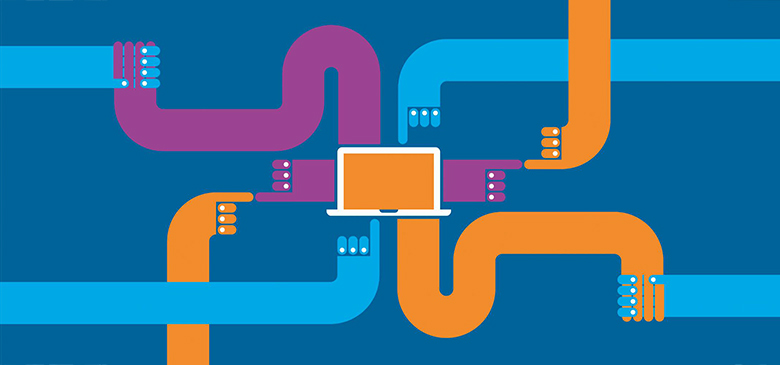
Treasury technology can be complex, both for the treasury function – who are not IT experts – and for the IT team, who are not treasurers.
Multiple and fragmented technologies, including treasury management systems, bank and trading software, and valuation and communication services, coupled with the speed of change and emergence of new trends, have made the landscape increasingly difficult to understand and navigate.
Nevertheless, who wouldn’t want to ‘push a button’ with simplified, bespoke and integrated solutions to consolidate and standardise processes and reporting?
Yet treasury remains a complex discipline, unique to business and sector, and making decisions on when, where and how to invest are not easy.
The most important question is: what will new technology add to treasury’s capability?
As a starting point, you will need a solid and tangible business case for investment. Most corporates will face constant challenges from within to deliver year-on-year cost savings and this can only be achieved by looking at new ways of doing things.
In any business process, if you keep doing the same things, then at best you will get the same results. If you keep doing the same things in a fast-changing environment, your organisation may suffer severely from increasing regulatory requirements, potential errors and security and fraud issues.
Recent developments have required treasury to prioritise risk reduction and improve access to liquidity, as well as find cost-efficiencies.
This highlights wider enterprise risk concerns, including counterparty risk management, cash visibility and liquidity access, cash-flow forecasting, real-time reporting, IFRS 9 and other financial reporting and governance needs.
Compliance and regulatory change can provide a persuasive case for investment. Once expected benefits have been mapped to these objectives, the risks in not making the technology investment can overshadow financial cost savings.
Making suboptimal financing decisions or not being able to provide timely financial reports could cost your organisation more than the cost of the capital investment in technology.
Technology-led transformation needs excellent planning to realise its potential. ‘Out of the box’ rarely works.
Begin with the end in mind, and you are more likely to benefit from broader business change. Think broader again to reach for more: how many steps might your new technology eliminate from your current processes? How much more quickly would that enable you to deliver insight?
How much of an edge will these factors give you in terms of performance, and how can these be demonstrated as providing value to the business as a whole?
This is one of the best outcomes of new technology solutions: not only can they help you do what you currently do better, but they can also enable you to expand in new directions.
In examining real costs and whether there is an appetite to invest, you also have to consider whether you can afford not to invest. The common challenge for investment is to find ways to reduce costs or save time.
Technology that delivers either – or both – of these will give you an edge, which in turn could lead to better judgement, accuracy and certainty that more than justifies your investment. How ‘algo’ can and should your treasury function become? You need to identify the costs to your business of not investing in new technology.
There are a number of quantitative business benefits that can be identified, ranging from ‘hard’ (reduced hardware/licence costs, headcount reduction) to ‘firm’ (increased productivity through process improvement) and ‘soft’ (better reporting accuracy).
Traditionally, one of the most common business case problems in treasury has been quantifying the hard benefits. With treasury teams small in number, the headcount savings are rarely evident.
So it is critical to articulate clearly the softer benefits – such as real-time reporting or more accurate cash forecasting – and the business value that they bring.
People make decisions based on intangibles as well as tangibles. Always include qualitative benefits as a potential deal clincher.
The programme must be flexible enough to be future-proof and a ‘bi-modal’ approach will help link the current landscape to the desired end state. Mode 1 targets stability in getting the most from existing core system effectiveness.
You are likely to have an existing landscape and ways of working. Maximising this will appeal to the budget holders.
Mode 2 focuses on agility and ongoing investment in development, innovation and change. Using the latest technology in innovative ways, or being at the leading edge, is unlikely to be a smooth process because there is less experience available to guide you.
The complexities of getting layered products to work together with your core system and be ‘right first time’ can be costly without access to a combination that has been developed, tried and tested in practice elsewhere.
Strong project management is the key driver of implementation success and can overcome budget constraints, overburdened staff, scarcity of resources and tight timelines.
Key stakeholders need early identification: who is currently experiencing the ‘pain’; who will provide input during the project; who will benefit; who needs to approve the project; who will be accountable during the implementation, and so on. Accountability instils responsibility.
Identifying core implementation roles is also essential, including those who can identify and solve problems as they arise; those who have subject matter expertise; those who possess the seniority to allocate internal resources and those who have the capability to oversee the vendor relationship and keep the project on track.
Think broader to reach for more: how many steps might your new technology eliminate from your current processes?
Requirements must be prioritised and aligned to the budget provided, and the complexity of each must be understood.
Different platforms and feeds may be in scope, including market data, trading, banking, various forms of enterprise resource planning (ERP) and middleware. Whichever areas are targeted during your implementation phase, a clear critical path is needed. Furthermore, interdependencies between particular parts of the function must be tracked.
Deeper ERP integration, increasing automated transaction posting and reconciliations, insight and intelligence analytics, mobile and digital developments, and even a shift to hosted or outsourced support could evolve within the implementation timeframe, as benefits are seen and realised.
Finally, having taken the leap of faith and invested in the technology that you hope will take your treasury function forward, it is vital at each step to analyse what is working, what isn’t and what you can learn for next time. The pace of change in treasury technology means no investment should be considered as a one-off.
Realistically, any investment you make needs to be viewed as the start of a rolling programme. This positions your treasury function to think as a market innovator, or at least as a fast follower, that is open to keeping pace as products and services evolve, from cybersecurity to biometrics, predictive analytics to robotics, and even blockchain.
A technology-led change project can also be a great way to motivate your people. Developing a shared vision of a new technology and process landscape, and then sharing the highs and lows of delivering it, can pull together a bonded, agile new team.
Technology should encourage the right balance of releasing people from transactional work while maintaining an optimised control environment, becoming more algo and performing more value-adding activities.
How much of your treasury waterfront can it cover, and how agile is it to respond to change? A well-thought-through approach and process of continual improvement could even remove the need for a button to push – as it requires someone to decide to press it.
‘Do nothing’ is no longer a viable option: not only will it entail missing out on improved efficiencies and lower costs, but failing to consider emerging technologies in your landscape could mean losing competitive advantage or – worse – unacceptable operational and reputational risk for the organisation.
Carl Sharman is head of treasury technology advisory at Deloitte.
This article was taken from the November 2016 issue of The Treasurer magazine. For more great insights, log in to view the full issue or sign up for eAffiliate membership
